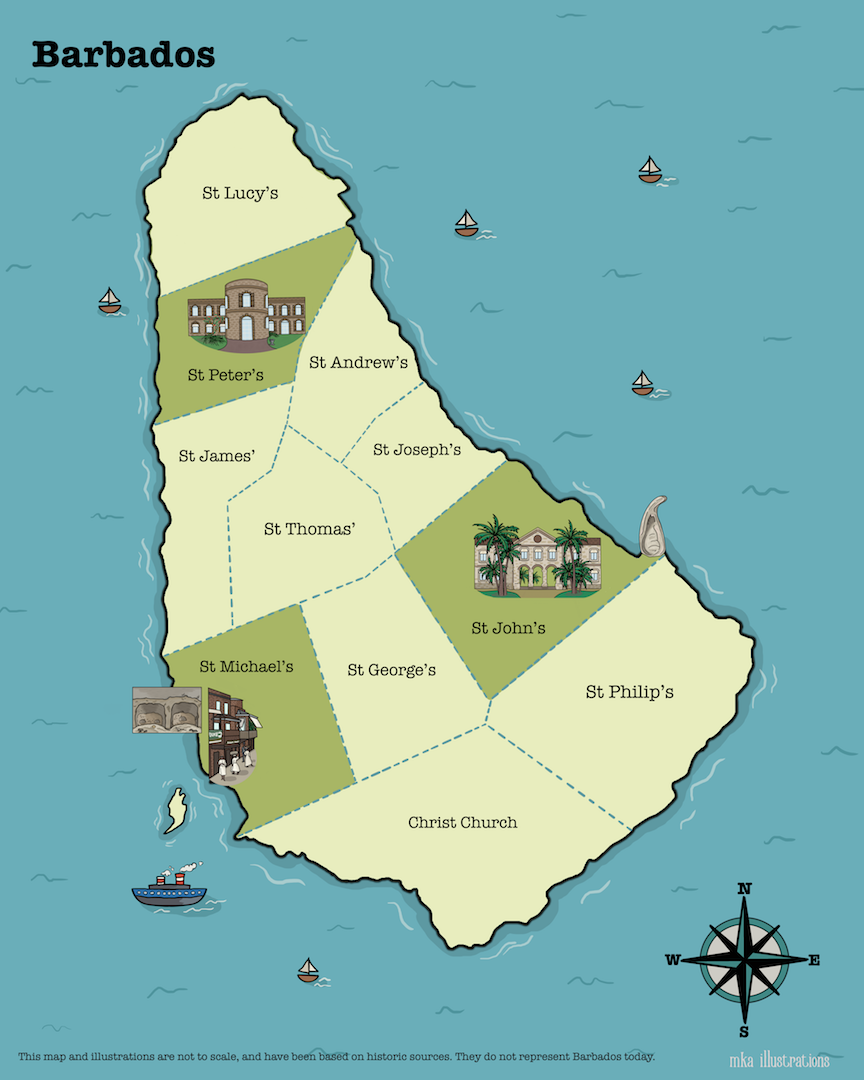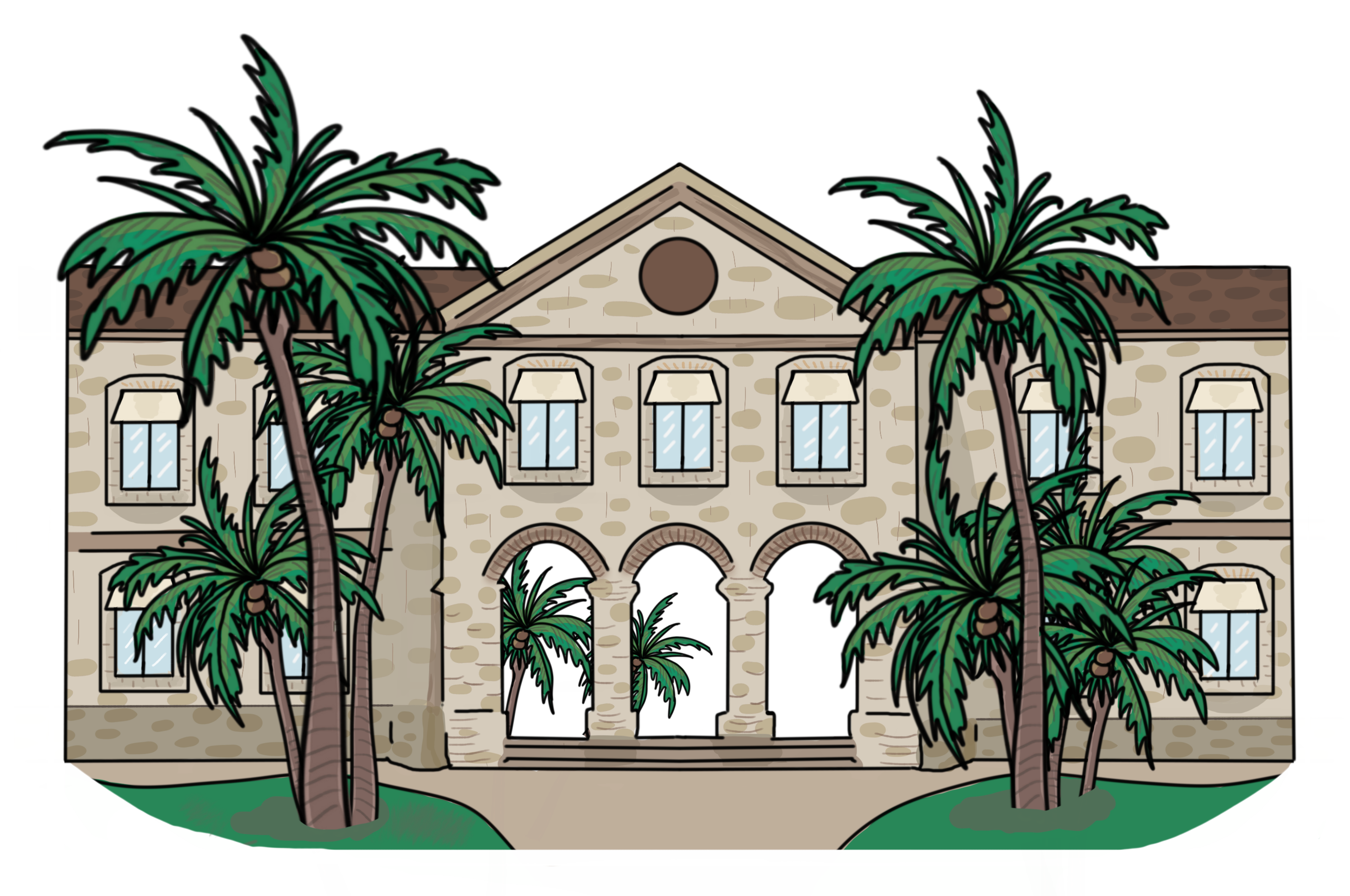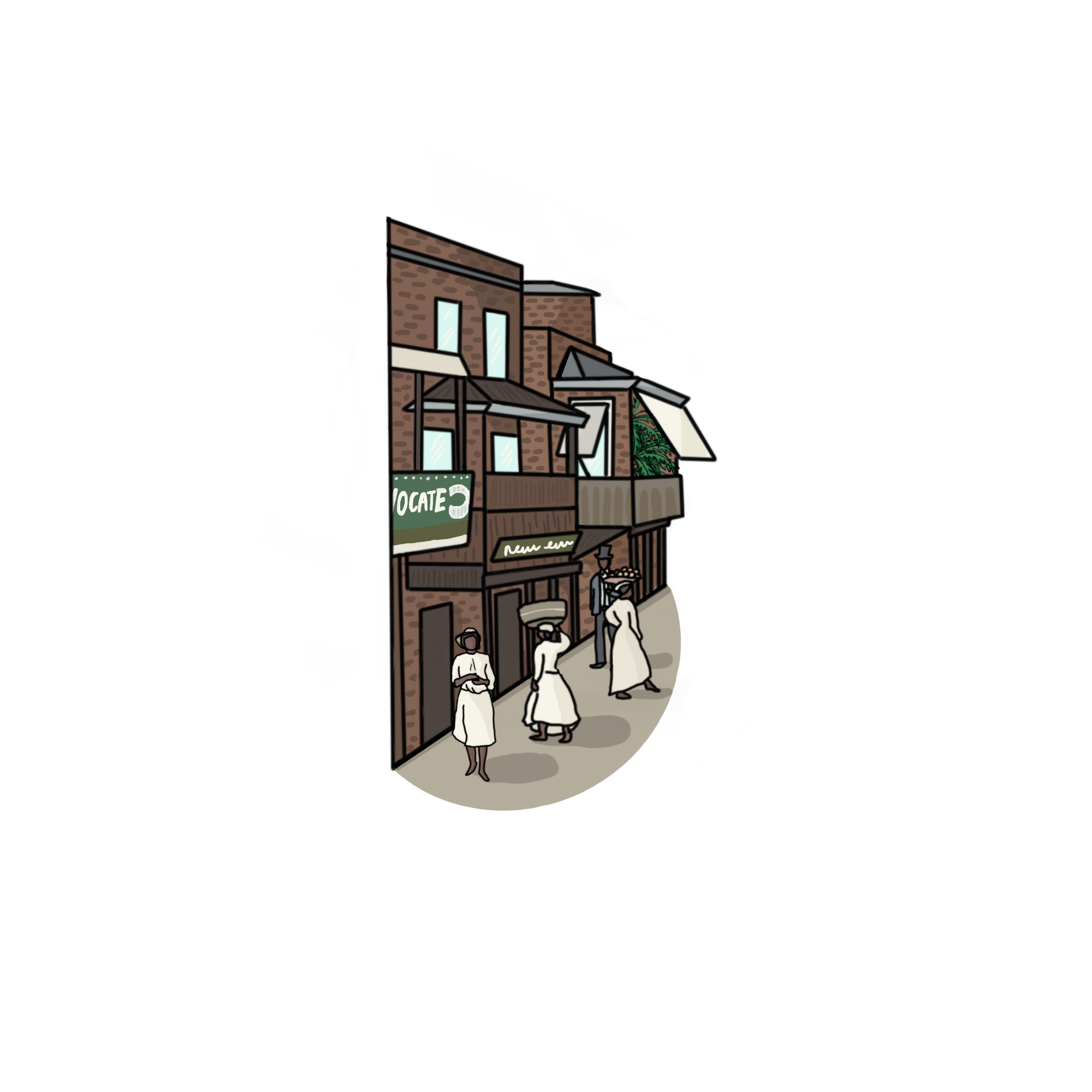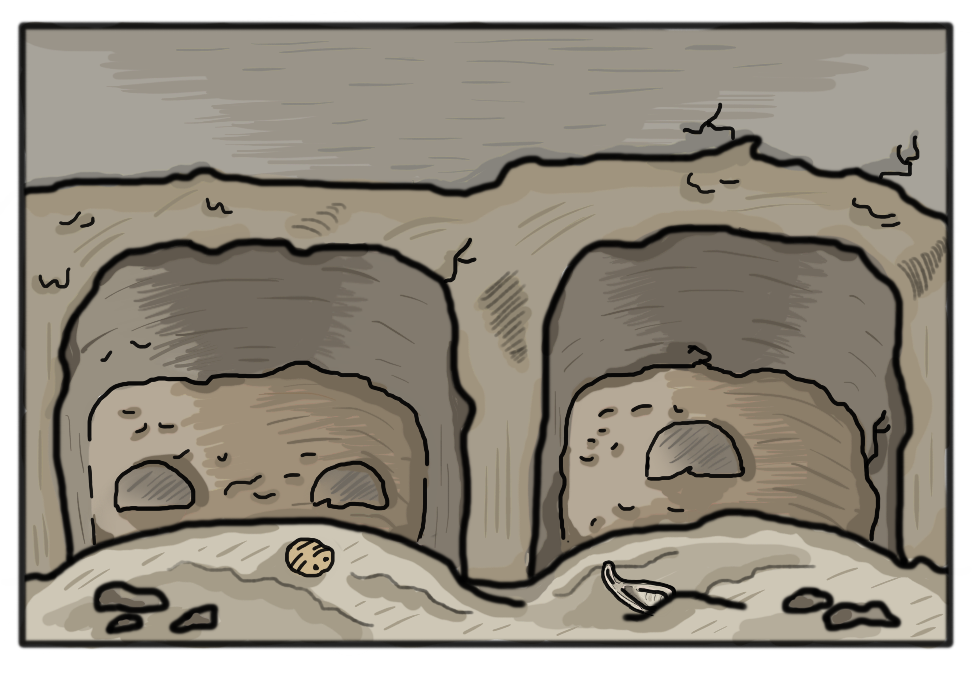Mapping Collections Histories: Barbados
In the 19th century, the Caribbean island of Barbados was part of the British Empire. During this period, both Barbadians and British visitors explored the island.
They found artefacts made by Indigenous peoples who had lived on Barbados before English people colonised the island in the 1600s and set up plantations on which enslaved Africans and their descendants worked.
Click Start Exploring Now to discover collections histories through this illlustrated map of Barbados using the red buttons.

Codrington College
Farley Hill
Bridgetown
Conset Point
Mount Ararat Estate caves

Codrington College
Codrington College was built on the estates of Sir Christopher Codrington, a White sugar planter. Artefacts made by Indigenous peoples on Barbados were found there. Some were put on display in the College.
Credit line - Illustration © Michelle Keeley-Adamson, 2020

Farley Hill
During the 19th century, White Barbadian Thomas Graham Briggs collected artefacts in Barbados. Many unrecorded Black Barbadians who discovered shell artefacts sold them on to him for a penny each. Briggs displayed the artefacts at Farley Hill, his mansion.
Credit line - Illustration © Michelle Keeley-Adamson, 2020

Bridgetown
Bridgetown is the capital of Barbados, and its main port. Many British visitors to Barbados in the 19th century would have passed through Bridgetown. One early historian noted the name was inspired by the remains of a bridge built by Indigenous peoples who inhabited Barbados before English colonists arrived in the 1620s.
Credit line - Illustration © Michelle Keeley-Adamson, 2020

Conset Point
White British antiquarian Rev. Greville Chester spent a year in Barbados in 1868. He travelled across the island exploring, excavating and collecting. He wrote that he discovered ancient tools made of shell at Conset Point.
Credit line - Illustration © Michelle Keeley-Adamson, 2020

Mount Ararat Estate
In 1868 the White Colonial Governor of Barbados made some unrecorded Black Barbadian prisoners dig into so-called “Indian caves” at Mount Ararat Estate to find artefacts. A White British collector named Rev. Greville Chester took artefacts from this excavation back to England.
Credit line - Illustration © Michelle Keeley-Adamson, 2020